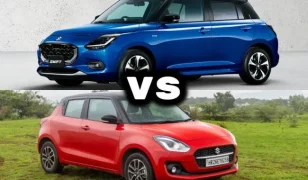Can gasoline and diesel burn together in the same engine? Yes RCCI is an engine which runs on both gasoline and diesel with a thermal efficiency of over 60%.
Reactivity controlled compression ignition (RCCI) is an engine invented by University of Wisconsin. The basic fundamental behind the working of the engine is combustion of low reactive fuel and high reactive fuel as per requirement.
This engine uses two kinds of fuel: one with a high reactivity and another with the low reactivity. As we all know diesel is a highly reactive fuel and gasoline is a low one. So, diesel will be used as a highly reactive fuel with gasoline as a low reactive one. Other than gasoline; natural gas and ethanol can also be used because of their low reactivity. But the research was carried out with the samples of gasoline as a low reactive fuel. To know more visit Wisconsin engine research consultants
How does it work?
The engine has two injectors, one for low reactive fuel and another for highly reactive fuel. The first one is known as port injector while the later is known as the direct injector.
During the first intake stroke, the air-fuel mixture is poured in the engine from port injector which is gasoline and air. While compression stroke, diesel is injected twice. The first injection takes place before the temperature of gasoline and air mixture is not hot enough. Due to this injection diesel mixes with the mixture of gasoline and air. This mixture of diesel and gasoline is concentrated above the layer of only gasoline.
The second injection is done at the end of compression stroke. The diesel flame is injected which is called as cool flames. These cool flames do not very hot at the layer of it but only due to these flames combustion takes place in the cylinder. Due to this, the mixture of diesel and gasoline ignites which ultimately forces the low reactive fuel to ignite efficiently. To sum it up, the combustion is done in three simple steps:-
- Diesel cool flames which have low heat
- Diesel-gasoline mixture ignites
- Low reactive fuel ignites.
The ratio of injection of diesel fuel and gasoline can be manipulated to get a significant change in pressure-crank shaft rotation graph.
How it is advantageous
After many test results on a 2.44L, 1cylinder, having a compression ratio of 16:1 and engine speed of 1300 RPM, following outcome emerges.
At low loads that low throttle, the efficiency of the engine is 49% when the percentage of gasoline is 46 and air-fuel ratio of 45:1.
At its highest loads, efficiency is seen somewhere near to 52% having 15:1 air-fuel ratio.
The efficiency reaches its highest somewhere in the middle at whopping 56% having an air-fuel ratio of 24:1.
PROS
- Cool burning which results in less formation of nitrogen oxides.
- Well mixed diesel fuel
- Super-efficient. more efficient than any other engine especially the diesel engine
- Low heat transfer losses
- Eliminating exhaust after treatment which meets 2010 EPA requirements without any after treatment
CONS
- Complex design due to two fuels.
- Require two separate fuel tanks
- Under development






